7 Fascinating Technical Facts About The 2017 Honda NSX

A couple of months ago, I found myself blatting the new Honda NSX around Portugal’s Estoril circuit. When I wasn’t falling in love with the car’s ability and surprising tactility, I was being blown away by all the geeky tech stuff going on under the skin.
While our verdict on the NSX has since been delivered, it’d be remiss of me not to delve a little deeper into some of this tech. Let’s get started…
The V6 engine has a weird cylinder bank angle
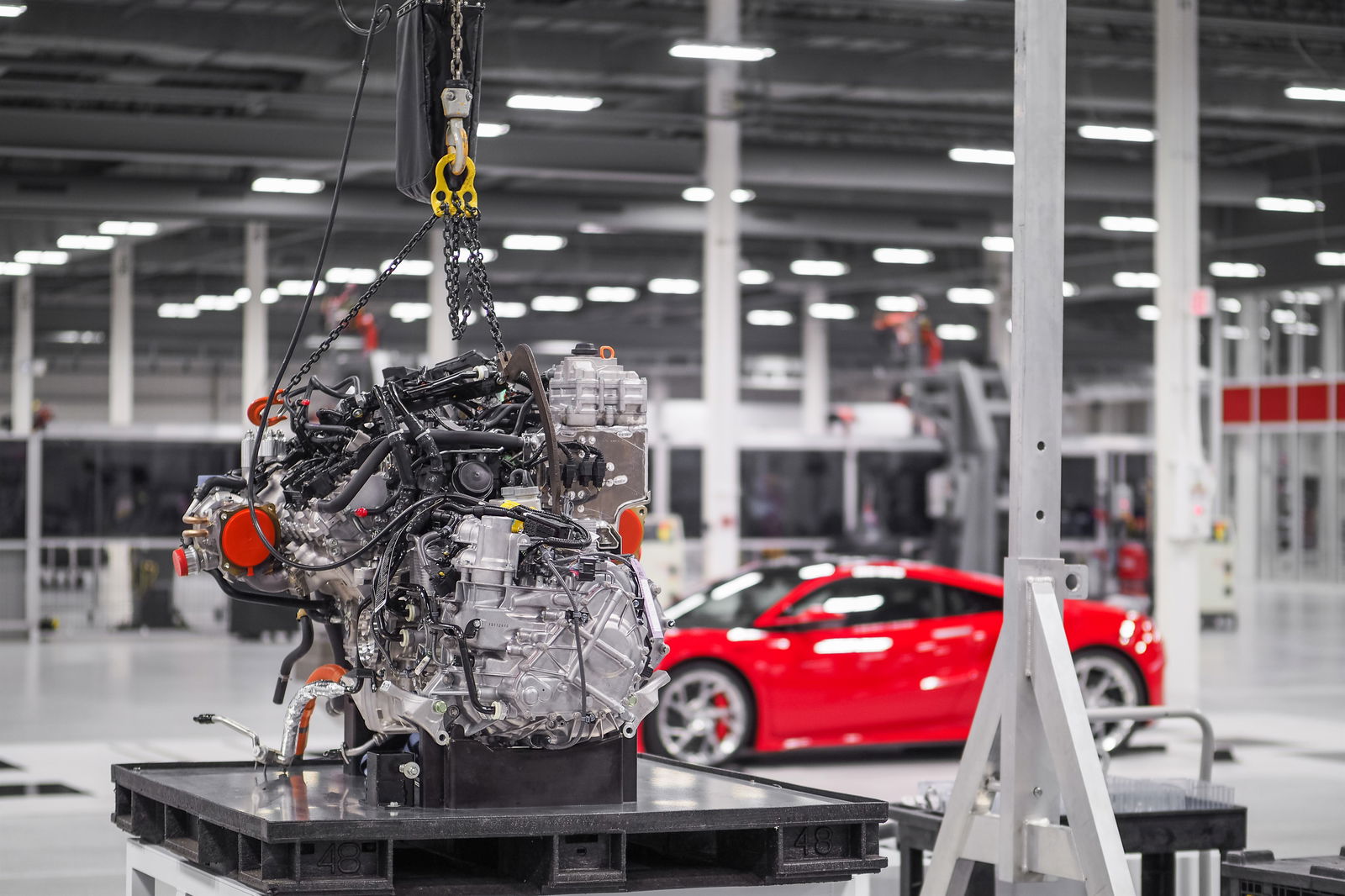
V6 engines most commonly have either a 60 or 90-degree V angle. But the NSX? Its 3.5-litre lump sits at a positively weird 75-degree angle. It’s not an angle unique to the NSX’s V6 - a now defunct line of Isuzu engines were 75-degree affairs - but it is very uncommon.
It’s all about giving the engine a low centre of gravity. Sure, as anyone who understands how numbers work can tell you, 90 is a wider angle than 75. But 90-degree V6s - a layout usually found on designs derived from 90-degree V8s - have inherent vibration issues. So, 75 it is.
It’s also an engine that’s unique to NSX. Unlike early designs of the car which featured an existing Honda V6 mounted transversely, the longitudinally-mounted unit in the NSX is of a clean sheet design. It’s nowhere near as melodic as the old 3.0 litre, but give it a few years and there’ll be plenty of these cars running around with nicely shouty aftermarket exhausts.
It has the lowest centre of gravity of all current 'baby' supercars
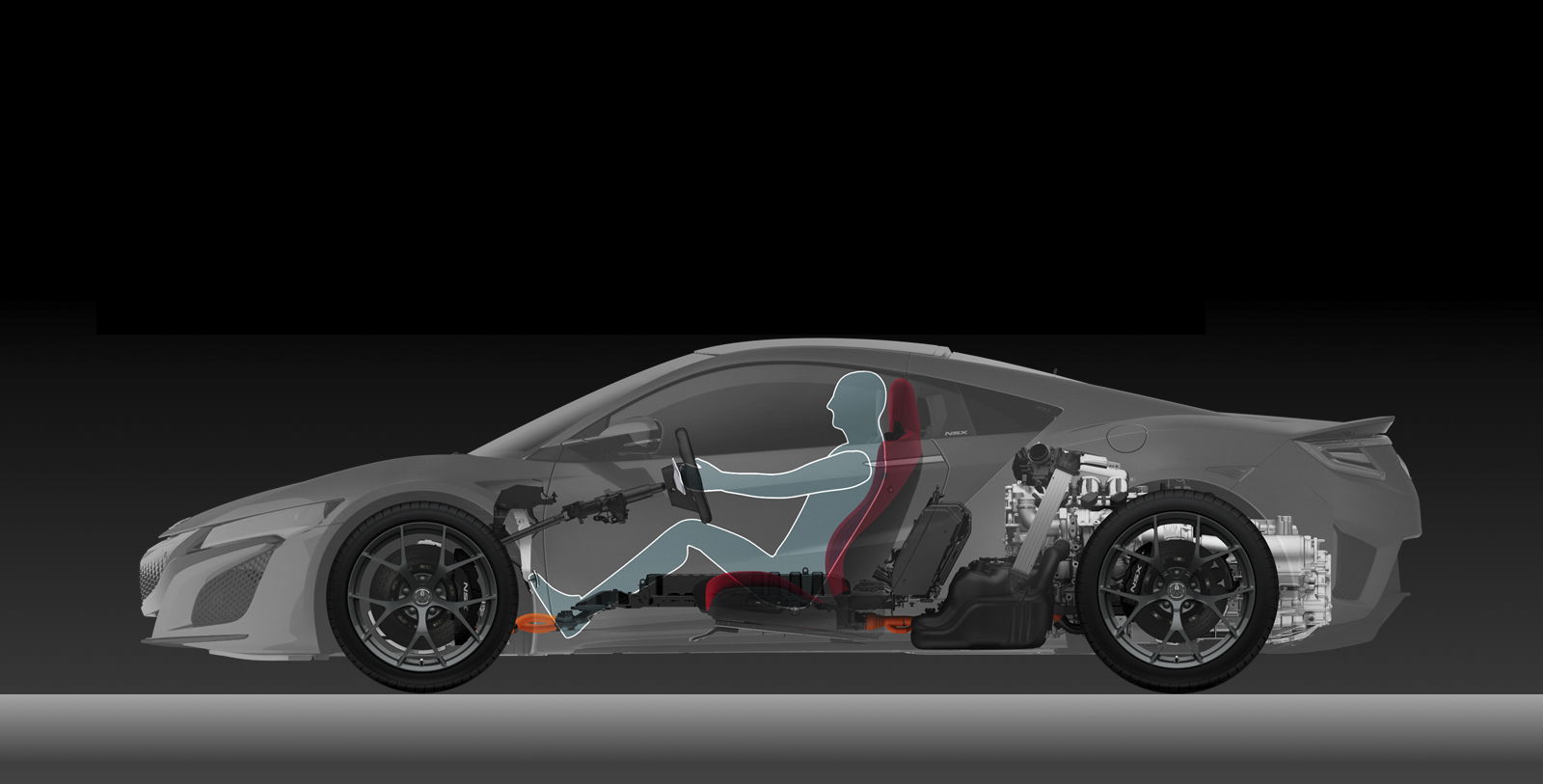
Partly thanks to that aforementioned V6 and the fact its mounted very, very low with a compact nine-speed dual clutch gearbox, the NSX has ended up with a jolly low centre of gravity. In fact it’s the lowest in class.
The brake pedal simulates feel to unnerving effect
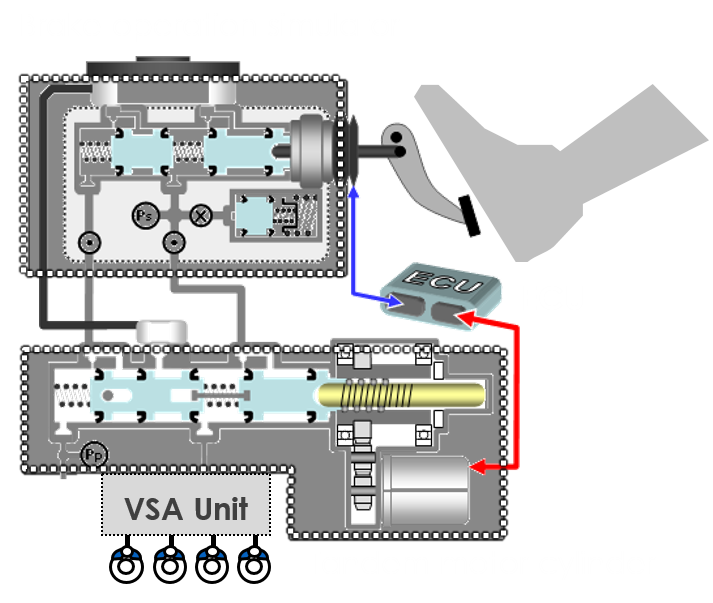
When first driving the new NSX at Estoril circuit, I was taken aback by just how much feel there was through the brake pedal. Particularly because it’s not really ‘feel’ at all: as the NSX operated a brake-by wire system, it’s simulated.
A feedback system using the rate of deceleration as a reference point, giving the amount of stiffness you’d be feeling with a conventional hydraulic setup. Sounds like it shouldn’t work, but trust me: it does.
The motors make it faster in a straight line, and in corners
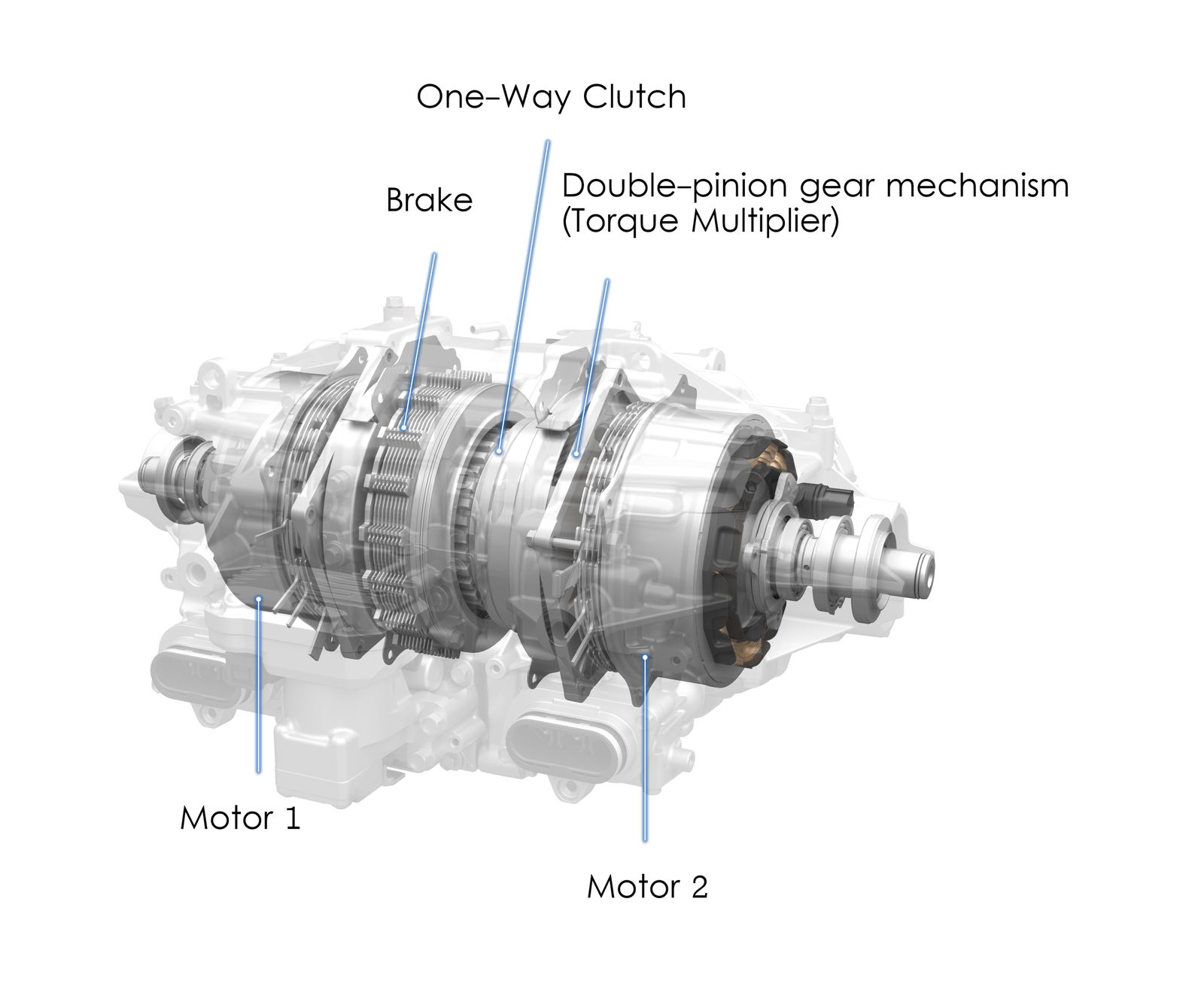
The NSX gets a trio of electric motors. There’s a pair on the front axle - each putting out 37bhp - plus an extra one attached to the flywheel. As well as making you quicker in a straight line and providing ‘torque fill’ to give more low-end response, the hybrid setup is also intended to make you quicker round corners.
The two front motors can operate individually, apply either a positive or negative torque input. So, the torque output over the front axle can be varied where necessary, effectively nudging the nose back into line when you’re driving hard.
Sounds very much like a limited-slip differential, but an LSD can’t apply negative torque like these motors can, and an LSD only works under throttle, whereas this system will happily work off throttle. I’ll admit the one time I felt the motors guiding me when off throttle at Estoril was a little unnerving, but it saved me from embarrassingly smacking into a cone.
At the rear meanwhile, things are a little more conventional. We have conventional torque vectoring by braking system, plus a mechanical LSD.
As explained here by NSX Dynamic Project Leader Nick Robinson - a man with an exceptional intellect as well as a stunning moustache - Honda’s new supercar does some very clever things with airflow. Air is carefully directed down the sides of the cars to the intakes in front of the rear wheels, after which it flows onto out of the rear via the flying buttresses, slots in the tail lights and boot, plus the larger outlets in the lower section of the bumper.
As a result of all the trickery, the NSX gets the downforce it needs, but without the need for big, pokey-out bits of aero.
The A pillars are thin, yet super strong
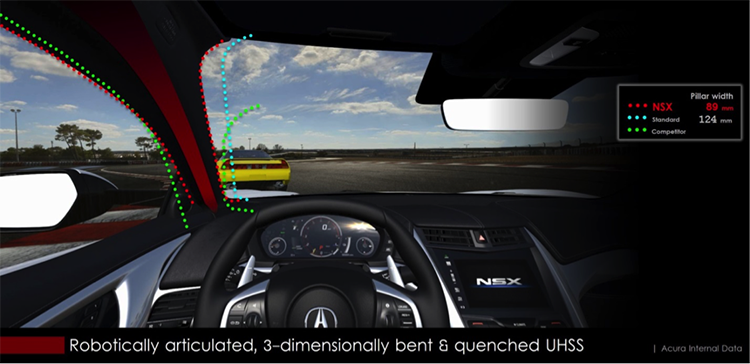
This seems like an odd point to pick out, but with massive, vision-blocking A-pillars becoming ever more common in modern cars, it’s refreshing to get in the NSX to find they’re delectably thin. Thanks to the pillars and the roof side rails being all one piece and made from ‘robotically articulated, three-dimensionally bent and quenched’ ultra high-strength steel tubes (quenching is the rapid cooling of heated metal, by the way), they’re about 33mm thinner than they would have been otherwise. Good to know.
It’s way stiffer than a Ferrari 458 Italia
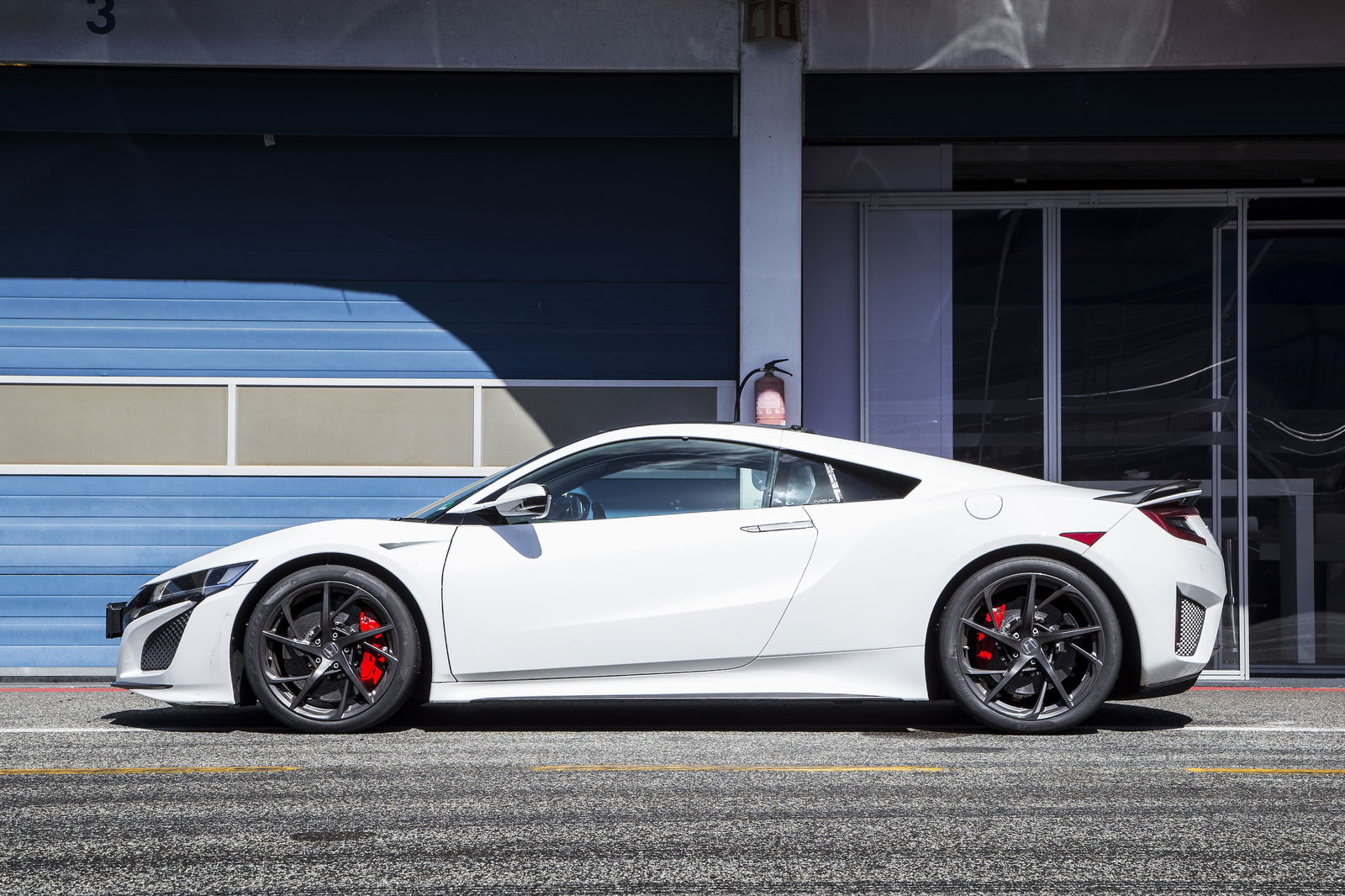
As well as a Porsche 991 911 GT3 and a McLaren 12C, the NSX development team bought a pair of Ferrari 458s for analysis. One of these was almost completely dissected, its sacrifice providing vital information. Thanks in part to the analysis of the Ferrari, the NSX’s multi-material space frame - made of that funky 3D quenched ultra high-strength steel, aluminium and bog steel - enjoys 300 per cent the dynamic torsional stiffness of the 458’s own space frame, and 200 per cent the static torsional stiffness. It’s the most rigid car in class, too.


Comments
I thought this was under acura wtf. Im in the us can someone explain
Best fact of all: Its slower than a Shelby GT350R and GTR
2G NSX drivers in 10 years be like:
new owner: Hey guys! (to NSX club members) just got a 2016 NSX!
Forum: Nice! So does it have any problems?
new owner: Not much, just a dent by the hood vent and rear window vent
Forum: You better get that fixed soon, lemme tell you about that one time my friend’s cousin’s friend’s brother spun out his NSX at the track because he had a dent in bla bla bla bla…..
new owner: y u do dis? :’(
So you found yourself “blatting the new Honda NSX around Spain’s Estoril circuit”, huh? Even though it’s in Portugal and not Spain?
Why are the only options for a decent sports car from Honda a supercar and a Civic Type R? If you are my age you look like a tool in a Civic Type R, and I can’t afford an NSX. Btw, the Accord coupe is not a sports car. Its a grocerygetter with 2 doors.
MattRobinson Estoril circuit it’s in Portugal, right in the capital
Electric motors kicked in yo!
Pagination